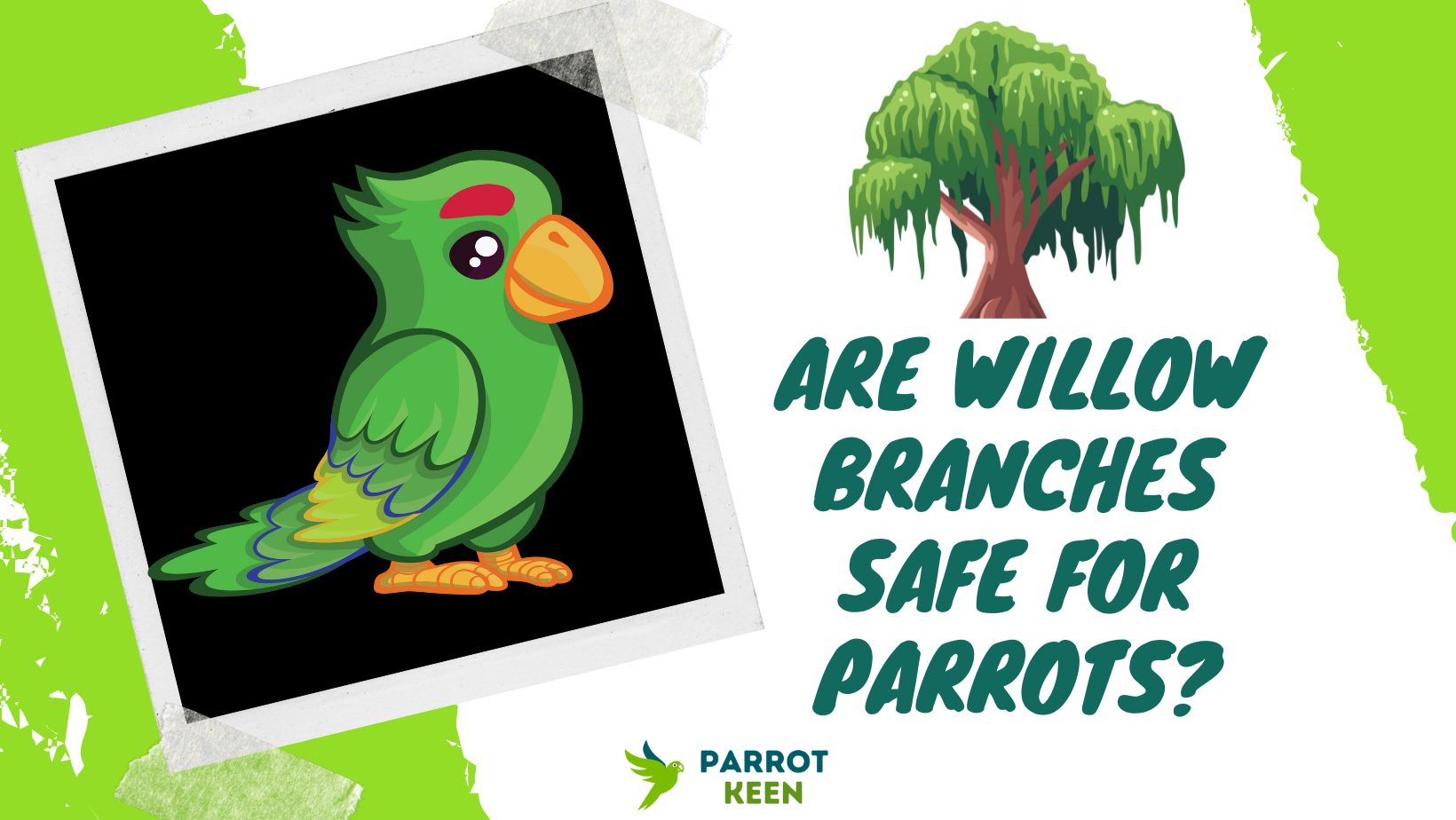
Are Willow Branches safe for Parrots: The Ultimate Guide
The question above is what many bird owners, especially parrot owners, ask, and this is why this article will provide the most helpful answer. Willow branches are a popular choice for perching and playing among many species of birds, but not all willows are created equal.
If you’re looking for a new and exciting way to keep your parrot entertained, you may want to try giving them willow branches to help them have fun.
Willow branches are a great source of enrichment for parrots.
This blog post will explore the safety of various willow branches for parrots and provide some tips on choosing the safest option.
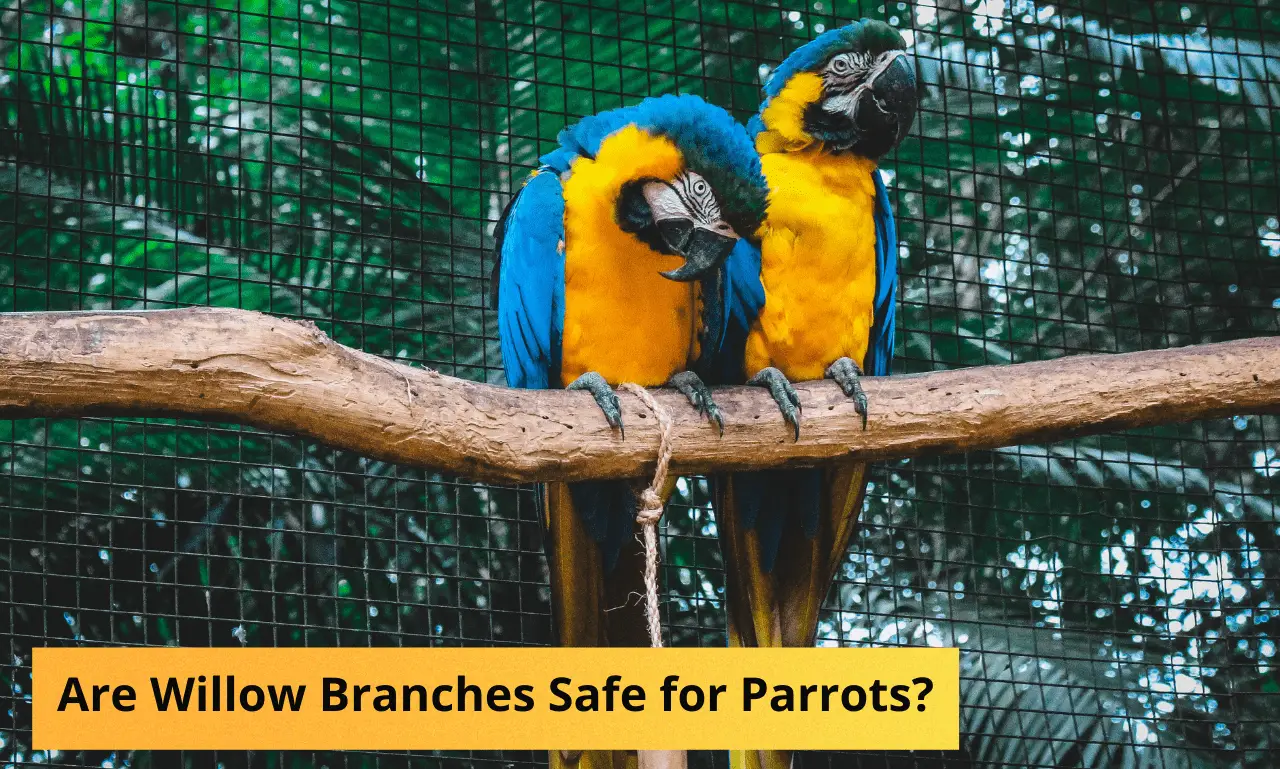
What is a Willow Branch
Willow branches are the common name for the branches of various willow trees.
Willow branches are generally long, thin, and flexible, making them ideal perching and climbing material for parrots.
Willow branches are also a popular choice for chew toys because they are relatively soft and easy to shred.
Some parrots even enjoy eating willow branches.
So, are willow branches safe for parrots?
Keep reading……….
Are Willow Branches Safe for Parrots?
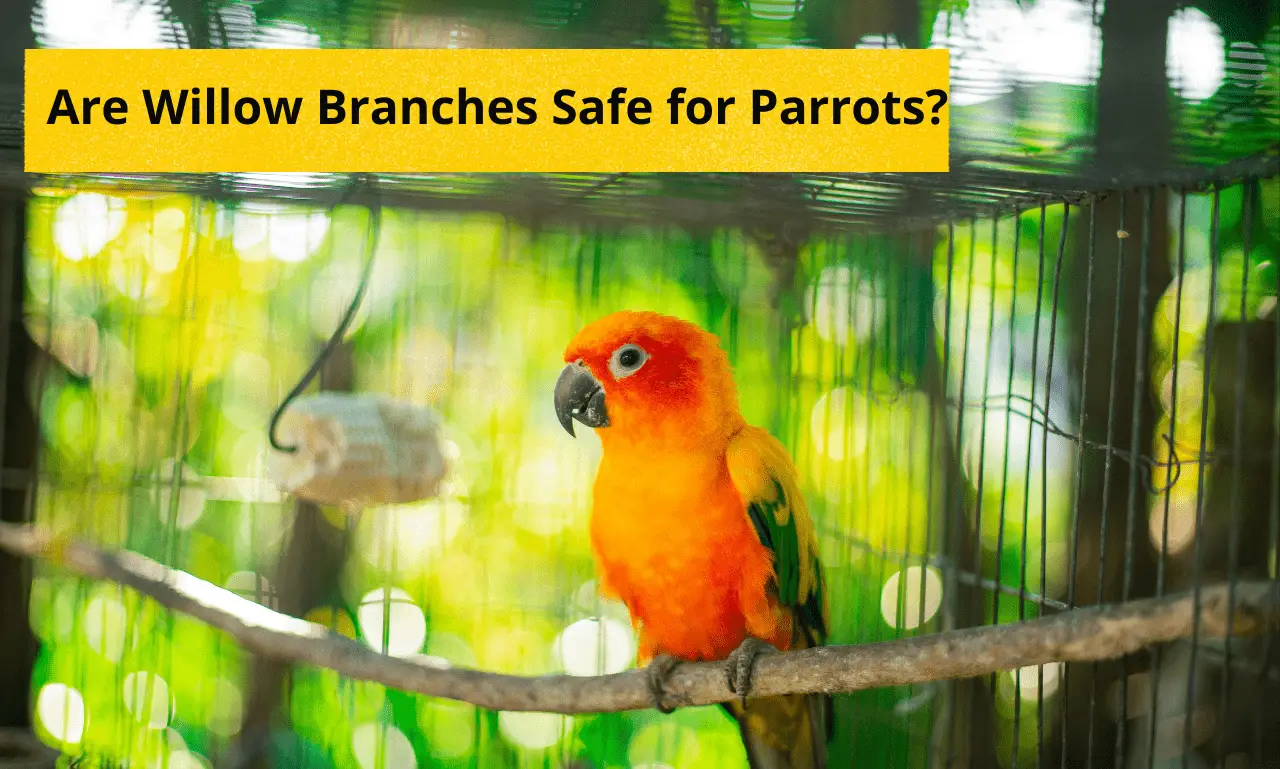
The answer to this question depends on the willow branch you’re considering.
Different species of willows contain different toxins, which can be harmful to parrots if consumed in large quantities.
Generally, willow branches are safe for parrots; they contain natural aspirin that can help relieve pain in parrots and keep them fit if consumed moderately.
The most important thing to remember when choosing willow branches for your parrot is to avoid branches from trees that have been treated with pesticides or other chemicals.
These chemicals can be very harmful to your parrot if ingested.
It’s also vital to avoid willow branches that have been treated with varnish or paint, as these products can contain toxins that can be harmful to your parrot if ingested.
As a bird owner, when you are in doubt, it’s always better to take caution, and I guess that is what you are doing now by trying to get answers to your question.
The safest willow branches for parrots come from trees that have not been treated with pesticides or other chemicals.
You can find Willow branches at most pet stores or online retailers that sell bird supplies.
If you’re unsure about the safety of a particular willow branch, it’s always best to consult with your veterinarian before giving it to your parrot.
How to Choose the Safest Willow Branch for Your Parrot
Willow branches can be a great source of enrichment for parrots, but choosing the right branch type for your bird is essential.
By following the tips below, you can ensure that your parrot will have a safe and enjoyable experience with willow branches.
When choosing willow branches for your parrot, there are some factors you’ll want to keep in mind. They are;
1. Size
The size of the willow branch is important for two reasons. First, you don’t want your parrot to get hurt if the unit falls on them.
Second, you want to make sure the branch is big enough that your parrot can comfortably grip it but not so big that it risks injury if it falls on them. When choosing a safe willow branch for your parrot, size is essential.
2. Color
The color of the willow branch is also essential. Some parrots are attracted to bright colors, while others prefer more subdued hues. You’ll want to choose a willow branch that appeals to your parrot’s taste.
3. Texture
The texture of the willow branch is also essential. Some parrots prefer smooth willow branches, while others like ones with more consistency.
You’ll want to choose a branch that your parrot can comfortably grip.
4. Shape
The shape of the willow branch is also essential. Some parrots prefer straight stems, while others like more curved ones.
You’ll want to choose a branch that your parrot can comfortably grip. It’s also essential to avoid giving your parrot branches that are too long, as they may be able to wrap around their necks and pose a choking hazard.
5. Weight
The weight of the willow branch is also essential. Some parrots prefer light stems, while others like more heavy ones.
6. Age of the Parrot
The age of the Bird is also an essential factor. If your bird is a baby, you’ll want to ensure the branch is soft and flexible. If your parrot is older, you’ll want to ensure the willow branch is solid and sturdy.
Also, Smaller birds may have a more challenging time gripping thicker branches, so it’s crucial to choose stalks that are the appropriate size for your bird.
Picking the right willow branch for your parrot can be a daunting task, but it doesn’t have to be.
By considering the size, color, texture, shape, age, and weight of the branch, you can find a safe and comfortable option for your feathered friend.
With a little bit of research, you can find the perfect willow branch for your parrot’s unique personality.
Types of Willow Branches for Parrots
There are many different willow branches/trees for parrots, but not all of them are created equal.
They are;
1. The Osier willow (Salix viminalis)
The Osier willow (Salix viminalis) is a willow native to Europe and Asia.
It is a fast-growing tree that can reach up to 30 feet.
The Osier willow has long, thin, flexible branches that are perfect for parrots to climb and swing on.
Osier willow is an excellent option for parrots who like to climb and swing.
The branches are long, thin, and flexible, making them perfect for birds to grip.
The Osier is an excellent option if you’re looking for a safe and fun willow branch for your parrot.
2. The Weeping Willow (Salix babylonica)
The Weeping Willow (Salix babylonica) is a willow native to China.
The tree gets its name from its drooping branches, which give it a weeping appearance.
The Weeping Willow is popular for ornamental gardens and parks due to its elegant looks.
The Weeping Willow is not safe for parrots as the tree contains poisonous compounds known as salicin and salicylic acid.
These compounds can cause gastrointestinal problems in parrots if ingested. In severe cases, ingestion of these compounds can lead to death.
3. The Creeping Willow (Salix Repens)
The Creeping Willow (Salix repens) is a species of willow native to Europe and Asia.
It is a small to medium-sized deciduous shrub with a creeping habit; the leaves are narrow, lanceolate, and pale green.
The flowers are yellowish-green and borne in catkins. The fruit is a small capsule containing numerous seeds.
The Creeping Willow is famous for ornamental plantings in gardens and parks. It is also used as a groundcover or erosion control plant in landscaping.
The plant can be invasive in some areas, particularly in wetland habitats. The Creeping Willow is poisonous to humans and animals if ingested in large quantities.
Symptoms of poisoning include vomiting, diarrhea, and abdominal pain.
4. The Dwarf Willow (Salix herbacea)
The Dwarf Willow (Salix herbacea) is a small shrub native to North America. It grows to be about two feet tall and has slender, bright green leaves.
The branches are flexible, and the bark is smooth. The leaves and twigs are covered in a waxy substance that makes them shiny.
The leaves and twigs are also not known to cause any allergies in parrots.
If you are looking for a safe willow branch for your parrot, the Dwarf Willow is a good option.
5. The Pussy Willow (Salix Discolor)
The Pussy Willow (Salix discolor) is a willow tree native to North America and has a weeping habit.
The leaves are long and narrow, with a silvery-white underside.
The branches are covered in tiny, fuzzy buds that reveal yellowish-green flowers.
6. Black willow (Salix nigra)
Black willow (Salix nigra) is a species of willow native to eastern North America, from Nova Scotia west to Alberta and Montana, and south to Tennessee and northern Georgia.
It grows in wet areas, often along streams. The black willow is a large deciduous tree growing to 10 m (33 ft) tall, with a 60 cm (24 in) diameter trunk.
The bark is blackish, with prominent fissures lending a diamond-shaped pattern.
The twigs are stout and yellow-brown to reddish-brown, often with tiny buds near the tips.
7. White Willow (Salix Alba)
White Willow ((Salix alba) is a tree native to Europe, Asia, and North Africa.
The tree can grow up to 30 meters tall and has around 200 years.
The White Willow is the most commonly used Willow tree for medicinal purposes due to the high concentration of salicin in the bark.
The White Willow is a popular type of tree for parrots because it is safe for your parrots to chew.
The tree’s bark is rich in salicin, thought to be responsible for pain-relieving.
No matter what type of willow you choose, always make sure to do your research and pick a safe branch for your parrot.
With a little bit of care, you can provide your feathered friend with hours of fun and entertainment.
Safe Branches and Trees for Parrots
Here is a list of non-toxic trees and safe branches for your parrots to chew, they are:
1. Appletree wood
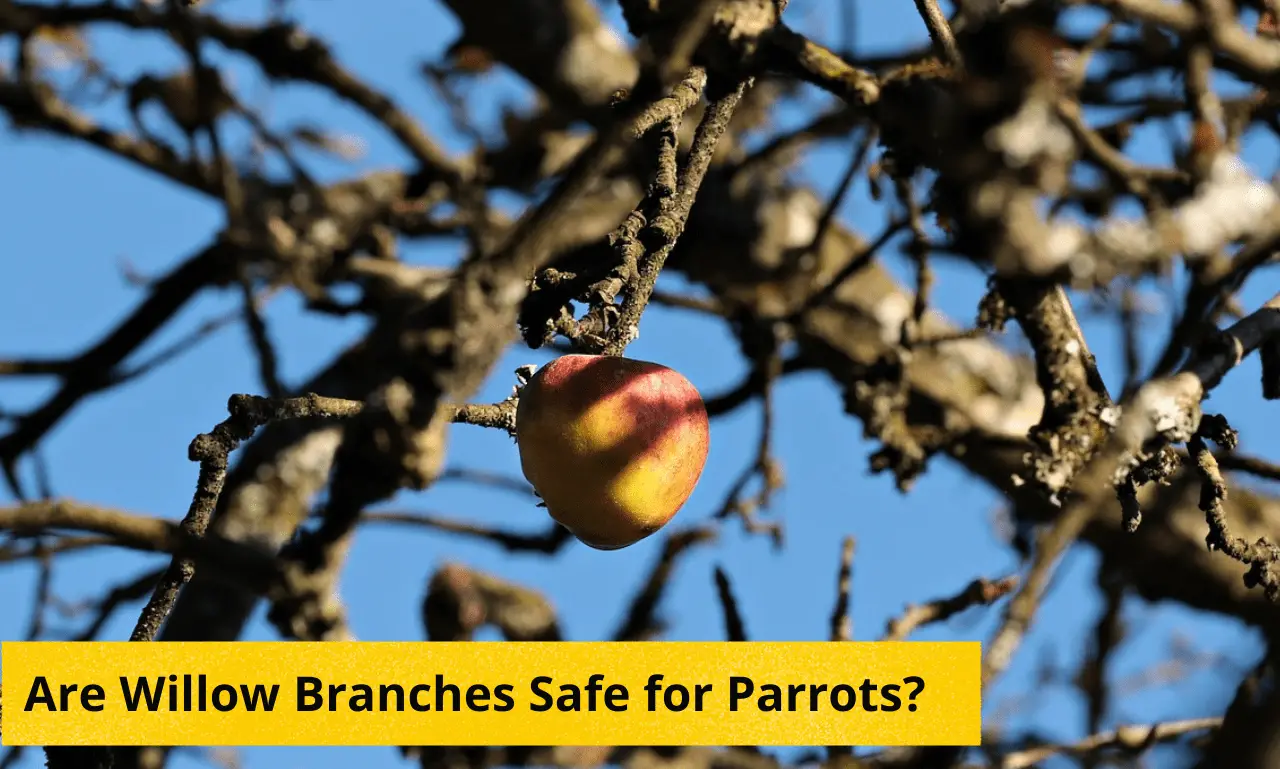
Appletree wood is a safe choice for parrots.
The bark is thick, and the branches are strong, making it a good option for climbing and chewing.
The leaves and fruit of the apple tree are also non-toxic to parrots, so they can enjoy snacking on them.
If you’re looking for a safe tree for your parrot, an apple tree is a good option.
2. Bamboo wood
Bamboo wood is a beautiful, sustainable, and eco-friendly material that makes for great parrot perches. It’s also a popular choice for bird toys and cage accessories.
Bamboo is strong and durable yet lightweight, ideal for parrots to have a firm grip.
Plus, it’s easy to find bamboo wood products free of toxic chemicals and pesticides.
When shopping for bamboo products for your parrot, make sure to choose items that are made of natural, untreated bamboo.
3. Elm
Elm is an excellent alternative to willow for parrots. It is sturdy and has a smooth bark that is easy for parrots to grip.
The leaves are also safe for parrots to eat. Elm is a good choice for parrots who like to chew on wood, as it is very tough and not easily damaged.
4. Firwood
Firwood is also a good choice for parrots. It is strong and has a smooth texture that is easy for parrots to grip.
The leaves are also safe for parrots to eat. Firwood is a good choice for parrots who like to chew on wood, as it is very tough and not easily damaged.
Fir is an excellent choice if you are looking for an alternative to willow branches for your parrot. Firwood is strong and safe for parrots to chew.
The smooth texture of the bark is also easy for parrots to grip.
5. Pinewood
Pinewood is safe for parrots to chew on and is an excellent alternative to willow branches. Pine trees are common in many parts of the world and are easy to find. You can usually find pine wood at your local pet store or online.
6. Manzanita
Manzanita is another safe tree for parrots. It is a hardwood tree that is native to North America.
The branches are strong and thick, making them suitable for larger parrots. Manzanita is also a beautiful tree with reddish-brown bark and white flowers.
7. Rosebush
Rosebush is safe for parrots because of its thorns.
The thorns protect the rosebush from being eaten by herbivores, so they are also safe for your parrot.
Rosebushes have beautiful flowers in various colors, making them a great addition to any garden. They can also be used as perches or nesting sites for your parrot.
Just remove any thorns from the branches before letting your parrot play on them.
8. Peartree
Peartree is safe for parrots because it is not poisonous. The leaves and the fruit of this tree are safe for parrots to eat. This tree is also a good source of vitamin C for your parrot.
9. Hibiscus
Hibiscus is a flowering plant that is safe for parrots. The flowers are beautiful and can be used to make leis or other decorations. The leaves are also edible and can be cooked as greens. Hibiscus is a prevalent tree in Hawaii and is often used in landscaping.
10. Birch
Birch trees are safe for parrots and make an excellent addition to their enclosure.
They provide shade and shelter and are a source of food and toys. Birch branches are also relatively soft to won’t hurt your parrot’s feet.
11. Maple
Maple trees are another species that is safe for parrots. Like willows, maples are not toxic to birds. In addition, maples provide a lot of shade and can be an excellent place for your parrot to spend time outside.
12. Ash
Ash trees are also safe for parrots. These trees are not toxic to birds and provide a lot of shade and shelter. Ash trees can also be an excellent place for your parrot to spend time outside.
13. Oak
Oak trees are another safe choice for parrots. These trees are not toxic to birds and provide a lot of shade and shelter.
Oak trees can also be an excellent place for your parrot to spend time outside.
Conclusion: Are Willow Branches safe for Parrots?
So there you have it, everything you need to know about willow branches and whether they are safe for
your parrot.
Willow branches make a great addition to your bird’s diet and provide many health benefits, but be sure only to give them un-treated willow branches and avoid giving your bird too much of a good thing.
Have you ever given your bird a willow branch?
Let us know how it went in the comments below!
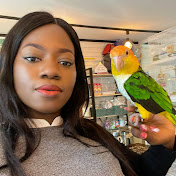
Hi, I am Thersa and Welcome to ParrotKeen, your number one place to get all the information you need about your cute parrot. I hope You Find it useful.
